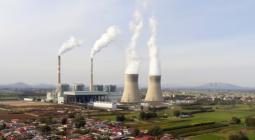Red alert’: last year was hottest on record by clear margin, says UN report
Records being broken for greenhouse gas pollution, surface temperatures and ocean heat
The world has never been closer to breaching the 1.5C (2.7F) global heating limit, even if only temporarily, the United Nations’ weather agency has warned.
The World Meteorological Organization (WMO) confirmed on Tuesday that 2023 was the hottest year on record by a clear margin. In a report on the climate, it found that records were “once again broken, and in some cases smashed” for key indicators such as greenhouse gas pollution, surface temperatures, ocean heat and acidification, sea level rise, Antarctic sea ice cover and glacier retreat.
Andrea Celeste Saulo, secretary general of the WMO, said the organisation was now “sounding the red alert to the world”.
The report found temperatures near the surface of the earth were 1.45C higher last year than they were in the late 1800s, when people began to destroy nature at an industrial scale and burn large amounts of coal, oil and gas.
The error margin of 0.12C in the temperature estimate is large enough that the earth may have already heated 1.5C. But this would not mean world leaders have broken the promise they made in Paris in 2015 to halt global heating to that level by the end of the century, scientists warn, because they measure global heating using a 30-year average rather than counting a spike in a single year.
The report documented violent weather extremes – particularly heat – on every inhabited continent. Some of the weather events were made stronger or more likely by climate change, rapid attribution studies have shown.
Friederike Otto, a climate scientist at Imperial College London who was not involved in the report, said: “If we do not stop burning fossil fuels, the climate will continue to warm, making life more dangerous, more unpredictable, and more expensive for billions of people on earth.”
Climate scientists are divided on whether extreme temperatures seen at the start of 2024 represent an unexpected acceleration of the climate crisis. Some indicators, such as sea surface temperatures, have been unexpectedly high – even accounting for the return of the ocean-warming weather pattern El Niño – while other weather events have reached rare extremes sooner that thought.
Andreas Fink, a meteorologist at Karlsruhe Institute for Technology who was not involved in the report, said: “In terms of temperatures, it can be stated that a year like 2023, although extreme, is already possible in climate simulations of the current human-heated climate. But not all extreme weather events can be simulated with the current climate models.”
The WMO found “a glimmer of hope” in the growth of renewable energy. The amount of renewable capacity added in 2023 was almost 50% greater than the year before, the report found, bringing it to the highest rate observed in the past two decades.
Simon Lewis, professor of global change science at University College London, said the state of the climate is an “accelerating crisis” for humanity. “This is, sadly, only the beginning of much worse impacts to come, given carbon emissions are still rising and there is continued massive new investment in extracting fossil fuels.”
The report found that marine heatwaves seared one third of the world’s ocean on an average day in 2023, harming vital ecosystems and food systems. By the end of the year, just 10% of the ocean had escaped heatwave conditions.
Climate change also worsened extreme weather events that left people hungry and forced them from their homes, even if it was not the main factor in their suffering. The number of people who are “acutely” food insecure has more than doubled since 2019 to 333 million people in 2023, the report found, concentrated in Africa and south Asia.
The uneven impact of climate change is already making itself clearly felt, said Karsten Haustein, a climate scientist at the University of Leipzig who was not involved in the report. “The public debate, on the other hand, continues to pretend that the problems of the global south do not affect [the global north] – and that the consequences of climate change can somehow be overcome through technology.”
Cover photo: Floods in Rochester, Australia, in January. Photograph: Diego Fedele/Getty Images




